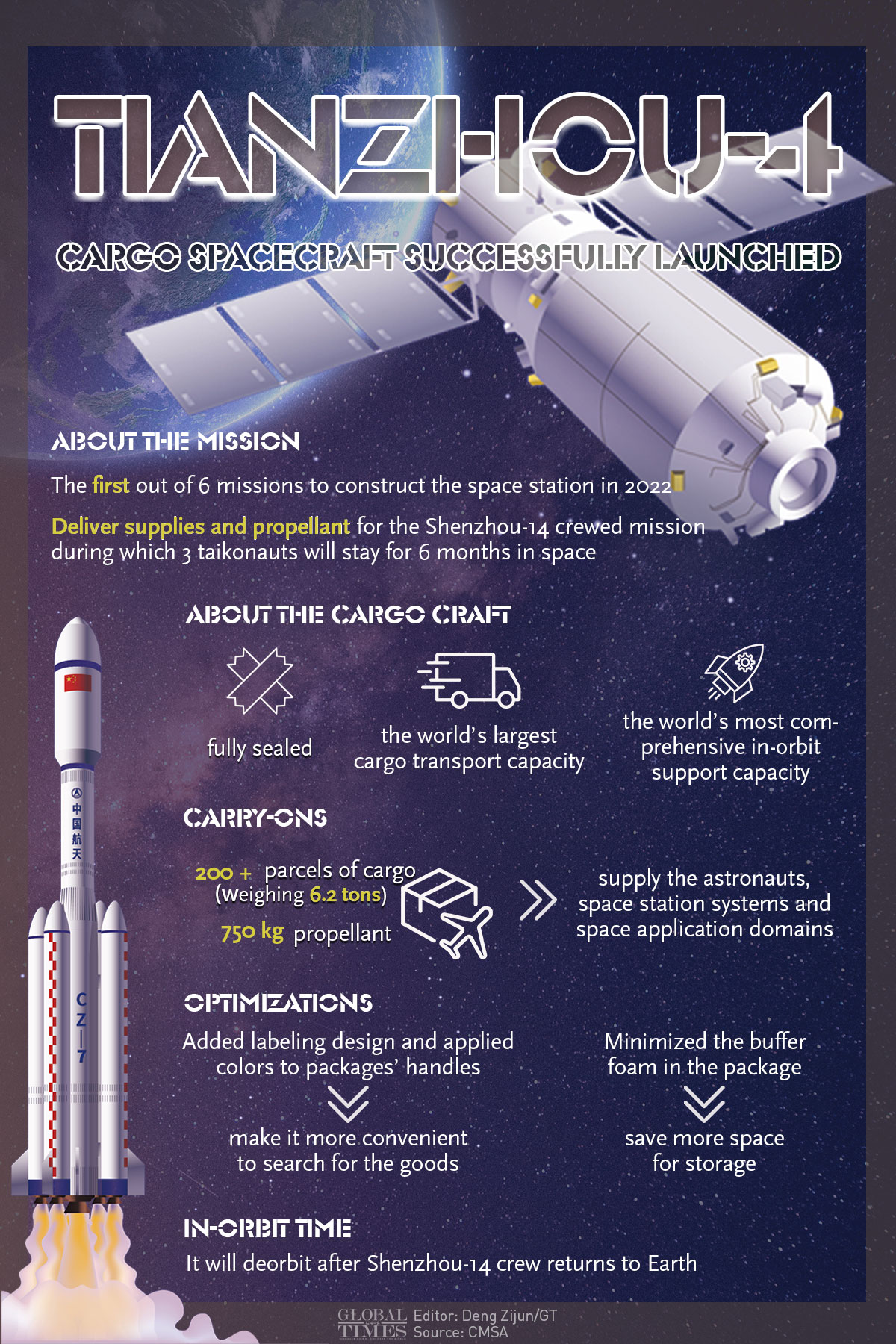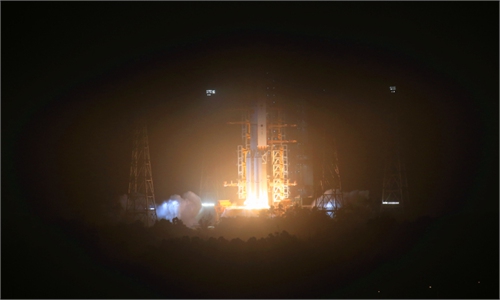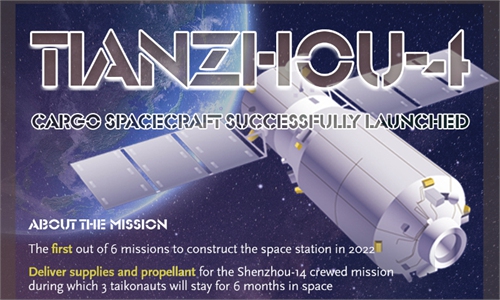Tianzhou-4 carries out fast rendezvous and docking with Tianhe core module, kicking off construction of China’s Space Station

Tianzhou-4 cargo spacecraft successfully launched Infographic: Deng Zijun/GT
As this year's first supply run for the construction of China's space station, the Tianzhou-4 cargo spacecraft successfully carried out a fast rendezvous and docking with the Tianhe core module on Tuesday morning.
The ultra-fast and smooth rendezvous and docking was completed at 8:54 am on Tuesday, after it was lifted off with a Long March-7 Y5 carrier rocket launched from the Wenchang Space Launch Center, located in South China's Hainan Province, on Monday evening, the China Manned Space Agency (CMSA) said in a statement.
Similar to the previous cargo mission launched in September 2021, it docked at the rear of the core module, joining the in-orbit Tianhe and Tianzhou-3, the CMSA revealed. The Tianzhou-2 mission, which was the first supply run heading toward the space station, detached from the core module about a month ago after accomplishing its mission.
According to the spacecraft developer, the China Academy of Spacecraft Technology (CAST), the Tianzhou-4 carries more than 200 parcels of cargo weighing some 6.2 tons, supplying the astronauts, space station systems and space application domains. Propellants of 750 kilograms are also onboard.
It also possesses capabilities of controlling the space station's flight form and orbit, providing remote monitoring and data transmission services to the space station as well as supporting in-orbit science experiments.
Tianzhou-4's journey to space and its docking operations have been secured by a "sky road" established by the "handshake" of a relay terminal and satellites, the CAST told the Global Times.
By establishing a space-based telecommunications system, the relay terminal can simultaneously "remote pilot" the Tianzhou-3, Tianzhou-4 and the Tianhe core module, transmit data such as images of rendezvous and docking to the ground in real time, and provide communications support for the entire process.
Once the telecommunication link is established, the ground's control and monitor coverage rate of the Tianzhou-4 will be improved by more than 90 percent, ensuring that the craft can stay in touch with the ground most of the time, CAST revealed.
The Tianzhou supply series has experienced a significant reduction of rendezvous and docking time over the years. The first Tianzhou mission, launched and docked with the Tiangong-2 in 2017, took about two days. The second mission last May took a mere eight hours to achieve the feat.


